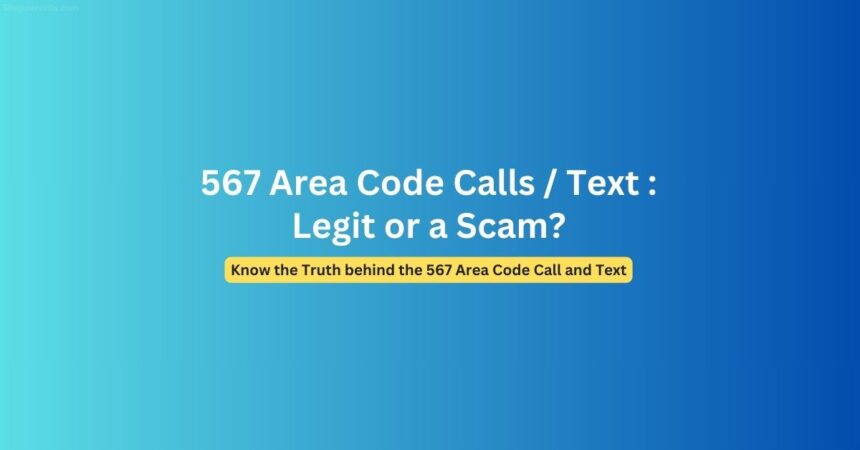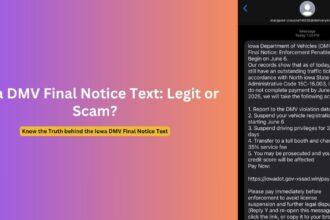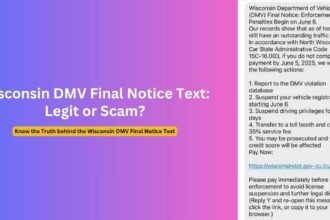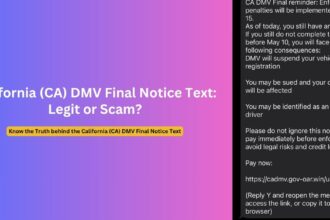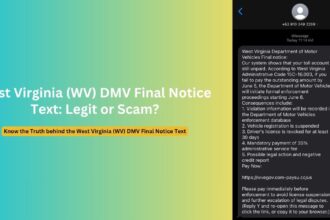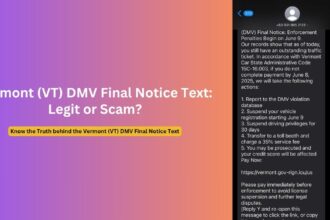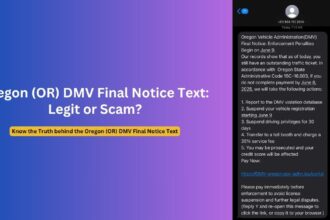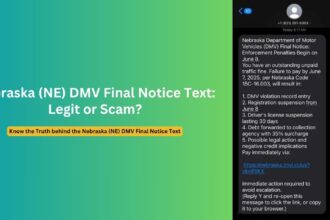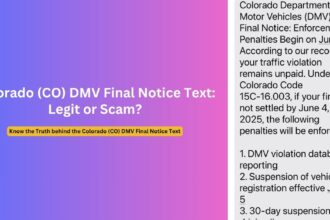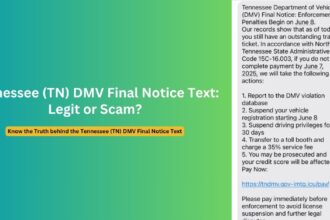Have you received an unexpected call or text message from a number with the 567 area code and wondered if it might be a scam? While 567 is a legitimate area code serving northwestern Ohio, it’s important to understand when communications from this area code might be suspicious. This comprehensive guide will help you identify legitimate uses versus potential scams, providing you with the knowledge to protect yourself from fraud.
What Is the 567 Area Code?
The 567 area code is a geographic area code that serves northwestern Ohio, including major cities such as Toledo, Lima, Mansfield, Findlay, and Sandusky. It was introduced in 2002 as an overlay to the existing 419 area code to accommodate the growing demand for telephone numbers in the region.
Unlike toll-free codes such as 844, which can be used by businesses anywhere in North America, the 567 area code is tied specifically to northwestern Ohio. This means that legitimate calls from this area code should generally be coming from businesses or individuals located in this region.
| Aspect | Details |
|---|---|
| Location | Northwestern Ohio |
| Major Cities | Toledo, Lima, Mansfield, Findlay, Sandusky |
| Time Zone | Eastern Time Zone (UTC-5/UTC-4 during DST) |
| Year Established | 2002 |
| Type | Geographic (not toll-free) |
| Overlay For | Area code 419 |
Legitimate Uses of the 567 Area Code
Many legitimate businesses and organizations use phone numbers with the 567 area code. Here are some common legitimate uses:
- Local Businesses: Retail stores, restaurants, service providers, and other local businesses in northwestern Ohio use 567 numbers to communicate with customers.
- Healthcare Providers: Hospitals, clinics, doctor’s offices, and pharmacies in the area use these numbers for appointment reminders and patient communications.
- Educational Institutions: Schools, colleges, and universities in the region use 567 numbers for administrative purposes and student communications.
- Government Agencies: Local government offices, utilities, and public services in northwestern Ohio may contact residents using 567 numbers.
- Business Expansion: Companies from outside the region may acquire 567 numbers to establish a local presence in northwestern Ohio, helping them connect with customers in the area.
Understanding these legitimate uses can help you better assess whether a call or text from a 567 number might be suspicious.
Common 567 Area Code Scams to Watch For
While many calls and texts from 567 numbers are legitimate, scammers can use these numbers in various ways. According to recent data from CallerSmart, the top reported scam calls from the 567 area code include:
- Medicare and Medicaid Scams (15.49% of complaints): Callers claim to represent Medicare or Medicaid and attempt to collect personal information or payments.
- Credit Card Debt Calls (9.86%): Scammers pose as debt collectors for credit card companies, threatening legal action for supposed unpaid debts.
- Health Insurance Scams (7.04%): Callers offer fake health insurance plans or claim you need to update your insurance information.
- Auto Warranty Calls (5.63%): These calls offer to extend your vehicle’s warranty, often for vehicles you don’t own or that are still under manufacturer warranty.
- Political Calls (4.23%): While some political calls are legitimate, scammers may pose as political organizations to solicit donations.
Additionally, there have been reports of spoofed 567 numbers being used in other common scams:
- Service Disconnection Scams: As seen in a Facebook post from Maricopa, AZ, scammers may claim your utility service (like Verizon) is scheduled to be disconnected due to payment issues, prompting you to provide payment information.
- Legal Document Scams: Scammers may claim they need to serve you legal documents and ask when you’ll be home, potentially gathering information about when your home might be empty.
- One-Ring Scams: The caller hangs up after one ring, hoping you’ll call back out of curiosity, potentially resulting in premium rate charges.
Red Flags That a 567 Call or Text Is a Scam
How can you tell if a communication from a 567 number is suspicious? Look for these warning signs:
- Urgency: The caller or texter creates a sense of immediate urgency, claiming you must act now to avoid serious consequences.
- Requests for Personal Information: They ask for sensitive data like Social Security numbers, credit card details, or online account passwords.
- Payment Demands: They insist on immediate payment, especially through unusual methods like gift cards, wire transfers, or cryptocurrency.
- Threatening Language: They use intimidation tactics, threatening arrest, lawsuits, or service disconnection.
- Caller ID Mismatch: If a company name appears on caller ID but the representative seems suspicious, the number may be spoofed.
- Unsolicited Contact: You receive a call or text claiming to be from a company you don’t do business with or don’t recognize.
- Grammar and Spelling Errors: Poorly written text messages with obvious language errors often indicate scam attempts.
How to Verify if a 567 Number Call or Text Is Legitimate
If you’re uncertain about a communication from a 567 number, take these steps to verify its legitimacy:
- Don’t Respond Immediately: Take time to investigate before responding or providing any information.
- Look Up the Number: Search the phone number online to see if others have reported it as a scam.
- Contact the Organization Directly: If the caller claims to represent a company you do business with, hang up and call the official number listed on your bill, the company’s website, or the back of your credit card.
- Check Your Accounts: Verify any claims about your accounts by logging into your online banking or service provider accounts directly (not through links provided in texts).
- Use Caller ID Apps: Apps like CallerSmart, TrueCaller, or RealCall can help identify potential scam numbers.
How to Protect Yourself from Fraudulent 567 Area Code Call or Text
To safeguard yourself against potential scams from any area code, including 567:
- Register with the National Do Not Call Registry: While this won’t stop scammers, it can reduce legitimate telemarketing calls (visit donotcall.gov).
- Use Call Blocking Features: Most smartphones have built-in features to block specific numbers. Additionally, many carriers offer call filtering services.
- Don’t Answer Unknown Numbers: Let calls from unfamiliar numbers go to voicemail. Legitimate callers will leave a message.
- Never Share Personal Information: Legitimate organizations won’t call or text asking for passwords, account numbers, or Social Security numbers.
- Be Wary of “Yes” Questions: Some scammers record you saying “yes” to use as fake authorization for charges. Avoid answering questions with a simple “yes.”
- Report Suspicious Calls and Texts: Report scam attempts to the Federal Trade Commission at ReportFraud.ftc.gov or by calling 1-877-382-4357.
What to Do If You’ve Been Scammed
If you believe you’ve fallen victim to a scam from a 567 area code number:
- Contact Your Financial Institutions: If you shared financial information or suspect unauthorized charges, contact your bank or credit card company immediately.
- Place a Fraud Alert: Contact one of the three major credit bureaus (Equifax, Experian, or TransUnion) to place a fraud alert on your credit report.
- Change Passwords: Update passwords for any accounts that may have been compromised.
- Report the Scam: File reports with:
- Federal Trade Commission (FTC) at ReportFraud.ftc.gov
- Federal Communications Commission (FCC) for phone scams
- Internet Crime Complaint Center (IC3) for online scams
- Your local police department
- Document Everything: Keep records of all communications, including phone numbers, times of calls, and what was discussed.
FAQs About 567 Area Code Calls and Texts
1. Is the 567 area code legitimate?
Yes, 567 is a legitimate geographic area code serving northwestern Ohio, including cities like Toledo, Lima, and Mansfield. It was established in 2002 as an overlay to the existing 419 area code. However, like any area code, scammers can use 567 numbers for fraudulent purposes.
2. How can I tell if a call from a 567 number is a scam?
Be suspicious if the caller creates urgency, requests personal information or immediate payment (especially through unusual methods), threatens legal action, or claims to represent an organization you don’t do business with. When in doubt, hang up and call the organization back using an official number from their website or your billing statement.
3. Why would I receive calls from 567 if I don’t live in Ohio?
You might receive legitimate calls from 567 numbers if you have connections to northwestern Ohio, such as family, friends, or business relationships. However, if you have no ties to the region and receive unexpected calls, exercise caution. Scammers often use auto-dialers to call numbers across the country.
4. Should I call back a missed call from a 567 number?
If you don’t recognize the number and aren’t expecting a call from northwestern Ohio, it’s generally safer not to call back. If it’s important, the caller will likely leave a voicemail. You can also search the number online to see if it’s associated with scam reports.
5. How can I block unwanted calls from 567 numbers?
Most smartphones allow you to block specific numbers through your phone’s settings. For Android phones, open the Phone app, find the number in your recent calls, tap on it, and select “Block number.” For iPhones, go to recent calls, tap the information icon next to the number, scroll down, and select “Block this Caller.”
6. What should I do if I’ve already shared personal information with a suspected scammer?
If you’ve shared financial information, contact your bank or credit card company immediately. Change passwords for any compromised accounts, place a fraud alert with credit bureaus, and report the scam to the FTC at ReportFraud.ftc.gov. Monitor your accounts closely for any suspicious activity.
Understanding Different Types of Area Codes
It’s helpful to understand the difference between geographic area codes like 567 and toll-free area codes:
| Type | Purpose | Examples | Location Association |
|---|---|---|---|
| Geographic Area Codes | Identify specific regions | 567 (NW Ohio), 212 (Manhattan) | Tied to specific locations |
| Toll-Free Area Codes | Free for callers to dial | 800, 844, 855, 866, 877, 888 | Not tied to any location |
While scammers may use both types of numbers, geographic codes like 567 suggest a call is coming from a specific region, while toll-free codes are often used by businesses serving a national customer base.
Conclusion
The 567 area code is a legitimate phone prefix serving northwestern Ohio. While many calls and texts from this area code are from legitimate businesses and individuals, scammers can and do use these numbers for fraudulent purposes. By understanding the common scams, recognizing red flags, and taking precautions such as verifying caller identity independently, you can protect yourself from potential fraud.
Remember that legitimate organizations won’t pressure you for immediate action, request sensitive personal information over the phone, or demand payment through unusual methods. When in doubt, hang up, research independently, and contact organizations directly through verified channels.
By staying informed and vigilant, you can navigate communications more safely and reduce your risk of falling victim to phone and text message scams from any area code, including 567.
